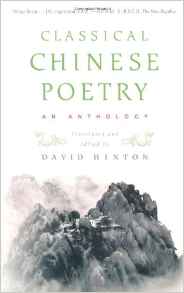 Highlights of Poetry.
Highlights of Poetry.
 Index of poetry.
Index of poetry.
 How to Write Poetry.
How to Write Poetry.
 Books read.
Books read.
 Yuki Teikei Haiku Society:
Yuki Teikei Haiku Society:
 Join.
Join.
 GEPPO magazine.
GEPPO magazine.
 Annual anthologies.
Annual anthologies.
The Yuki Teikei Haiku Society Retreat at Asilomar:
 2007.
2007.
 2008
(a haibun).
2008
(a haibun).
 2010.
2010.
 Toward an Aesthetic for English-Language Haiku by Lee Gurga.
Toward an Aesthetic for English-Language Haiku by Lee Gurga.
 2004 Pescadero Haiku Weekend Workshop (including exercises) with Christopher Herold.
2004 Pescadero Haiku Weekend Workshop (including exercises) with Christopher Herold.
 Haibun.
Haibun.
 Haiku.
Haiku.
 Hay(na)ku.
Hay(na)ku.
 Rengay.
Rengay.
 Renku.
Renku.
 Tanka.
Tanka.
 Ballade.
Ballade.
 Concrete.
Concrete.
 Ghazal.
Ghazal.
 Lai.
Lai.
 Pantoum.
Pantoum.
 Prose poem.
Prose poem.
 Rondeau.
Rondeau.
 Rubáiyát.
Rubáiyát.
 Sestina.
Sestina.
 Skaldic verse.
Skaldic verse.
 Sonnet.
Sonnet.
 Terza rima.
Terza rima.
 Triolet.
Triolet.
 Tritina.
Tritina.
 Villanelle.
Villanelle.
 Bashō.
Bashō.
 Beverly Acuff Momoi.
Beverly Acuff Momoi.
 Buson.
Buson.
 Chinese poetry: translations by Hinton.
Chinese poetry: translations by Hinton.
 Chinese poetry: versions by Rexroth.
Chinese poetry: versions by Rexroth.
 Classical Chinese Literature: An Anthology of Translations edited by Minford and Lau.
Classical Chinese Literature: An Anthology of Translations edited by Minford and Lau.
 Hosai Ozaki.
Hosai Ozaki.
 J. Zimmerman.
J. Zimmerman.
 J. Zimmerman (haibun).
J. Zimmerman (haibun).
 J. Zimmerman (haiku).
J. Zimmerman (haiku).
 J. Zimmerman (tanka).
J. Zimmerman (tanka).
 Jane Hirshfield.
Jane Hirshfield.
 Kay Ryan.
Kay Ryan.
 Kay Ryan's style.
Kay Ryan's style.
 Kay Ryan The Best Of It: New and Selected Poems.
Kay Ryan The Best Of It: New and Selected Poems.
 Ki no Tsurayuki.
Ki no Tsurayuki.
 Marianna Monaco.
Marianna Monaco.
 Ouzel (James Arnold).
Ouzel (James Arnold).
 Patricia Donegan.
Patricia Donegan.
 Patricia J. Machmiller.
Patricia J. Machmiller.
 Renée Owen.
Renée Owen.
 Shiki.
Shiki.

|

|
